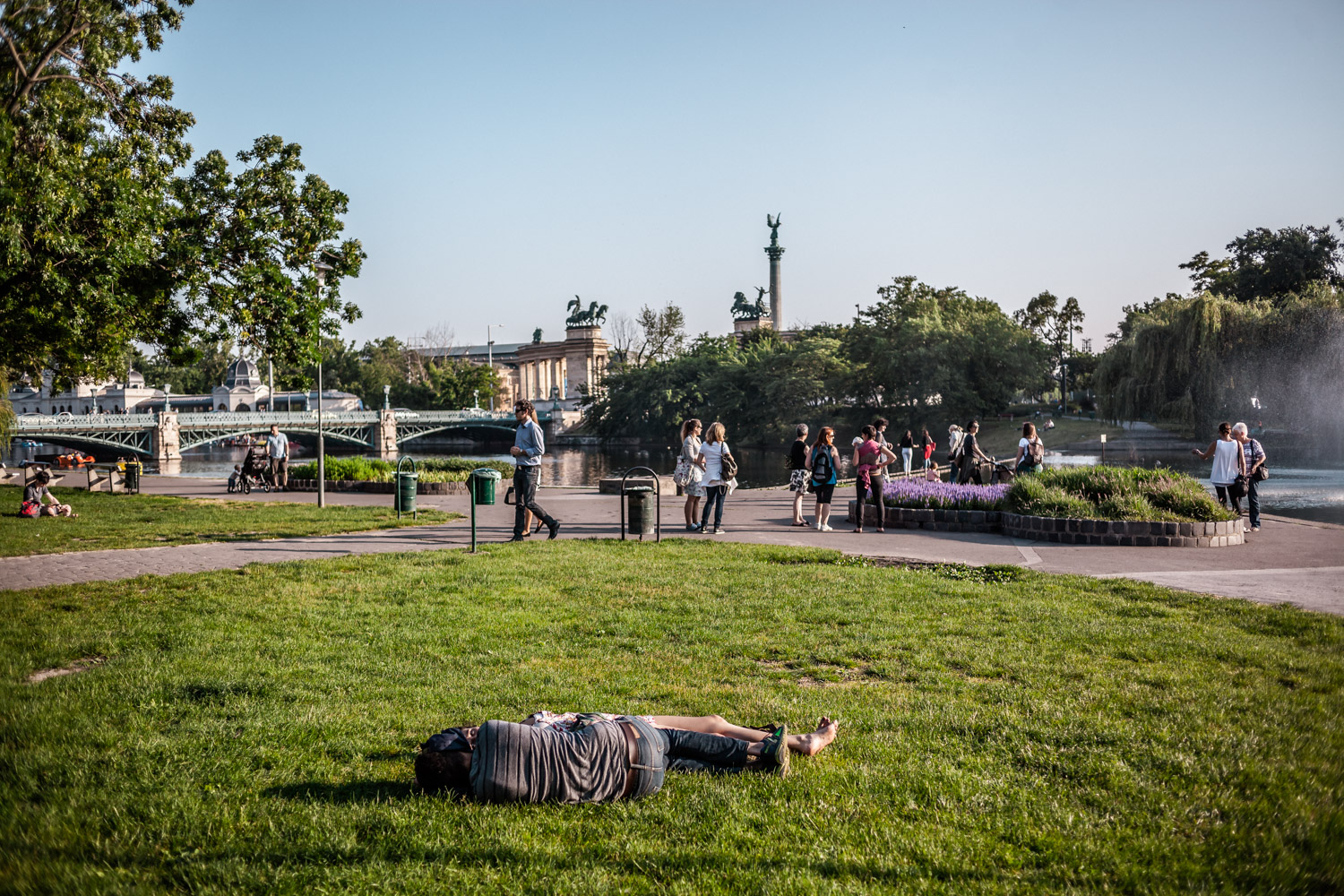City Park in the pastThe history of City Park dates back as far as the 13th century. Back then it was just a pasture far away from any settlements, and it didn’t really have a function – but according to legend, the area served as a venue for national assemblies of medieval nobles arriving from all over the country, and these open-air gatherings caused lasting damage to the land that eventually turned it into a swamp. The area was improved during the reign of revered King Matthias I – the Magyar monarch who ushered the Renaissance into Hungary – who supposedly liked spending time in the wildlife preserve that was established in this area that eventually became Városliget.
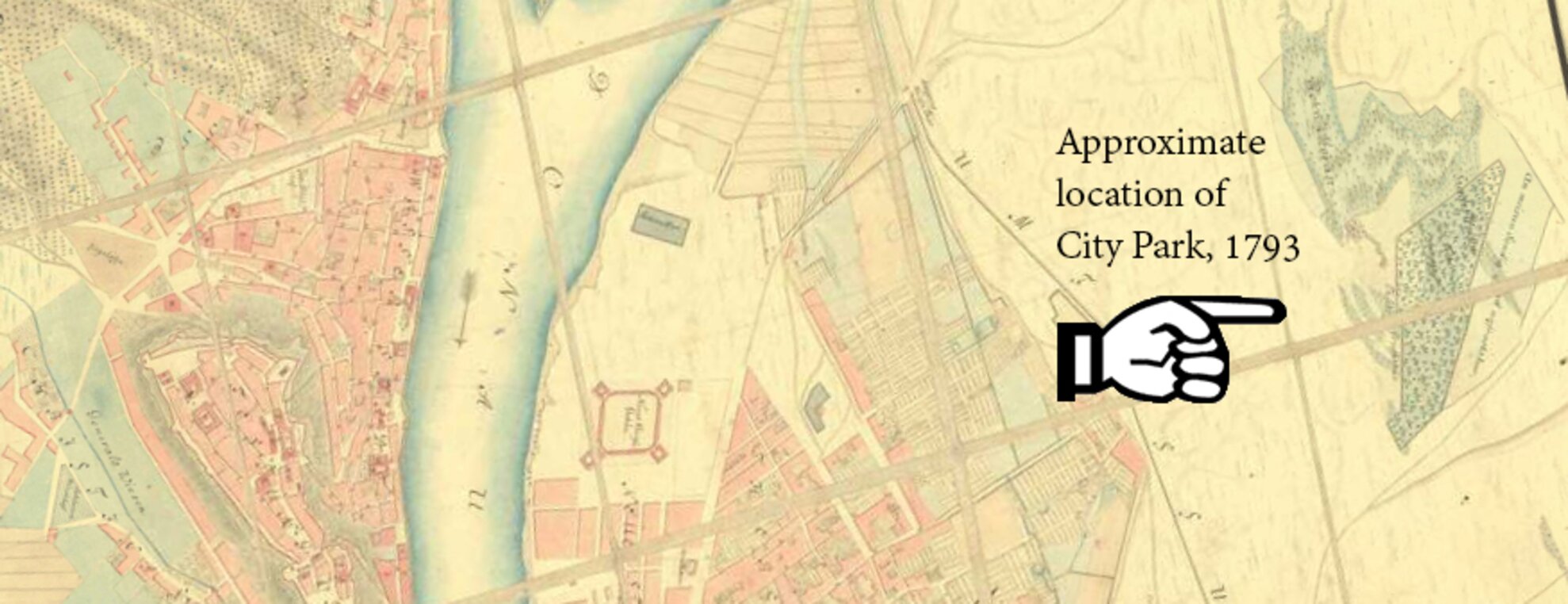
Fast-forward to the 18th century, and due to the increased malaria threat of the swampy area, measures had to be taken to further improve the park. After a few failed attempts, trees were successfully planted here during Hungary’s era under Habsburg rule, and the first pedestrian path was built. By the mid-1800s, as Pest’s settled areas began expanding eastward, the park was thriving: it became the terminus of the first omnibus line of Pest; the Budapest Zoo, one of the first animal parks in Europe, opened in 1866; and the predecessors of today’s City Park Ice Rink, Széchenyi Bath, and Capital Circus also opened here during this time.
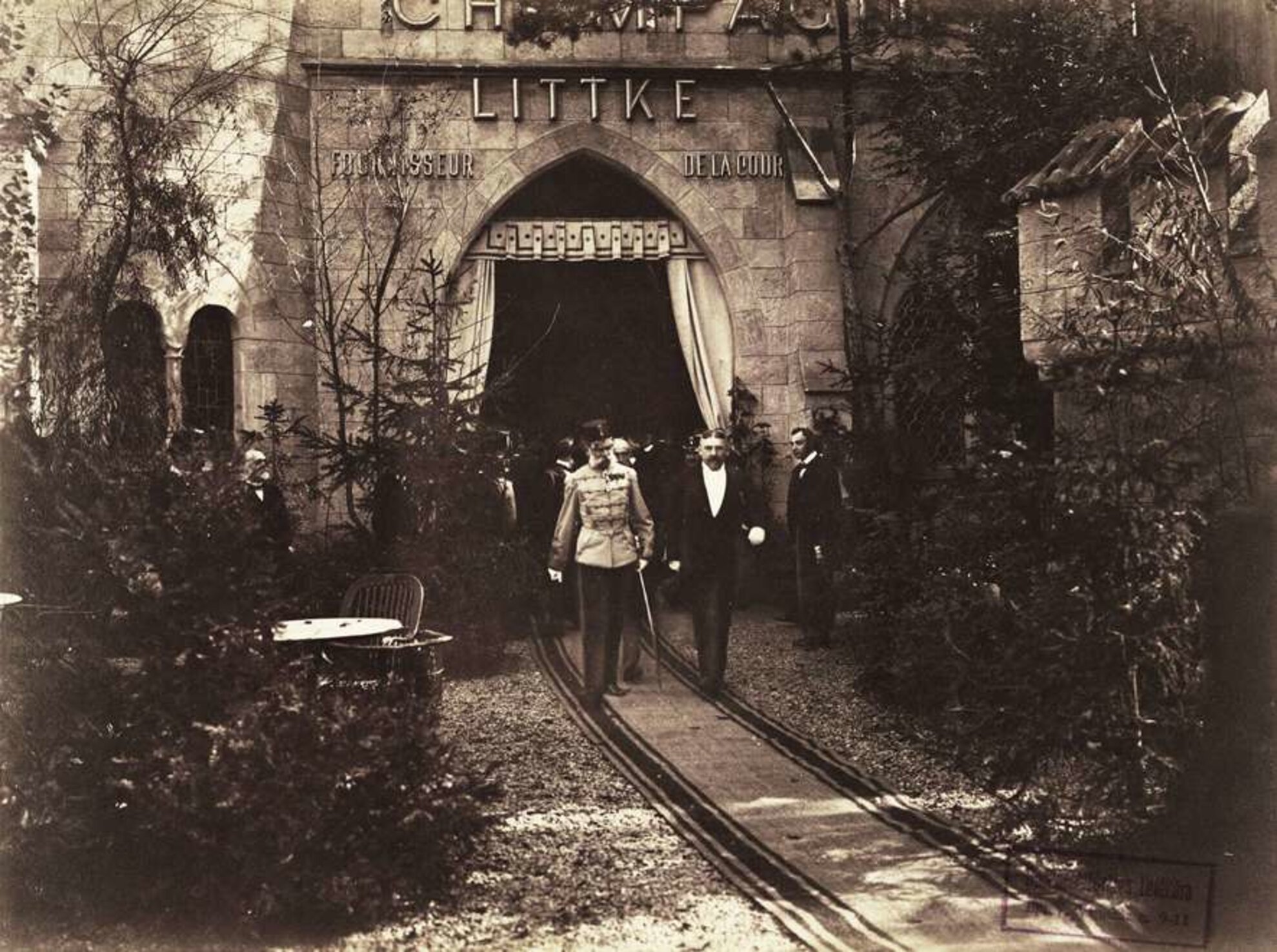
Then the aforementioned Millennium Celebrations arrived in 1896, when City Park provided a home for the Millennium Exhibition with more than 200 pavilions to showcase all kinds of cultural attractions having Hungarian origins; the guest of honor was Habsburg Emperor Franz Josef (pictured above touring a City Park landmark). As a site for an event of such a grand scale, City Park flourished and saw many rapid changes, including the construction of new buildings like the ornate Kunsthalle exhibition center or the fairy-tale palace of Vajdahunyad Castle, constructed to showcase Hungarian castle architecture from various eras of the country’s history. Another novelty that was completed for the Millennium Celebrations was the Millennium Underground, the very first metro line of continental Europe. The line was specifically created to take passengers to the City Park Millennium Exhibition from downtown Budapest, and with its beautiful Zsolnay-tiled stops leading to Heroes’ Square, the Millennium Underground remains a historic part of City Park.However, this peak event of Budapest’s belle époque was soon followed by the tragic arrival of World War I, and while there were no battles in Hungary during this conflict, several City Park buildings served as temporary military hospitals, including the newly built Museum of Fine Arts, the Kunsthalle, and the Ice Rink building.
As the war dragged on, it was rumored that the copper roofing of Széchenyi Bath was stripped to be melted down for military supplies, but otherwise City Park was spared major damage... however, after a short period of peace, the world caught fire again with the onset of World War II, and the flames caused much more devastation to Városliget. Bombs hit almost every building in the park, including the Museum of Fine Arts and Kunsthalle, and then City Park turned into a battlefield when the Red Army invaded Hungary’s capital during the Siege of Budapest. The Zoo also sustained extensive damage during the war, and most of their animals died during the battles, either as collateral damage or due to a lack of food.
Only a few animals survived, and some of them escaped from their damaged shelters – including a lion, who, according to World War II historian Krisztián Ungváry, hid in the tunnels of the nearby Millennium Underground for weeks, until Soviet soldiers managed to capture it.
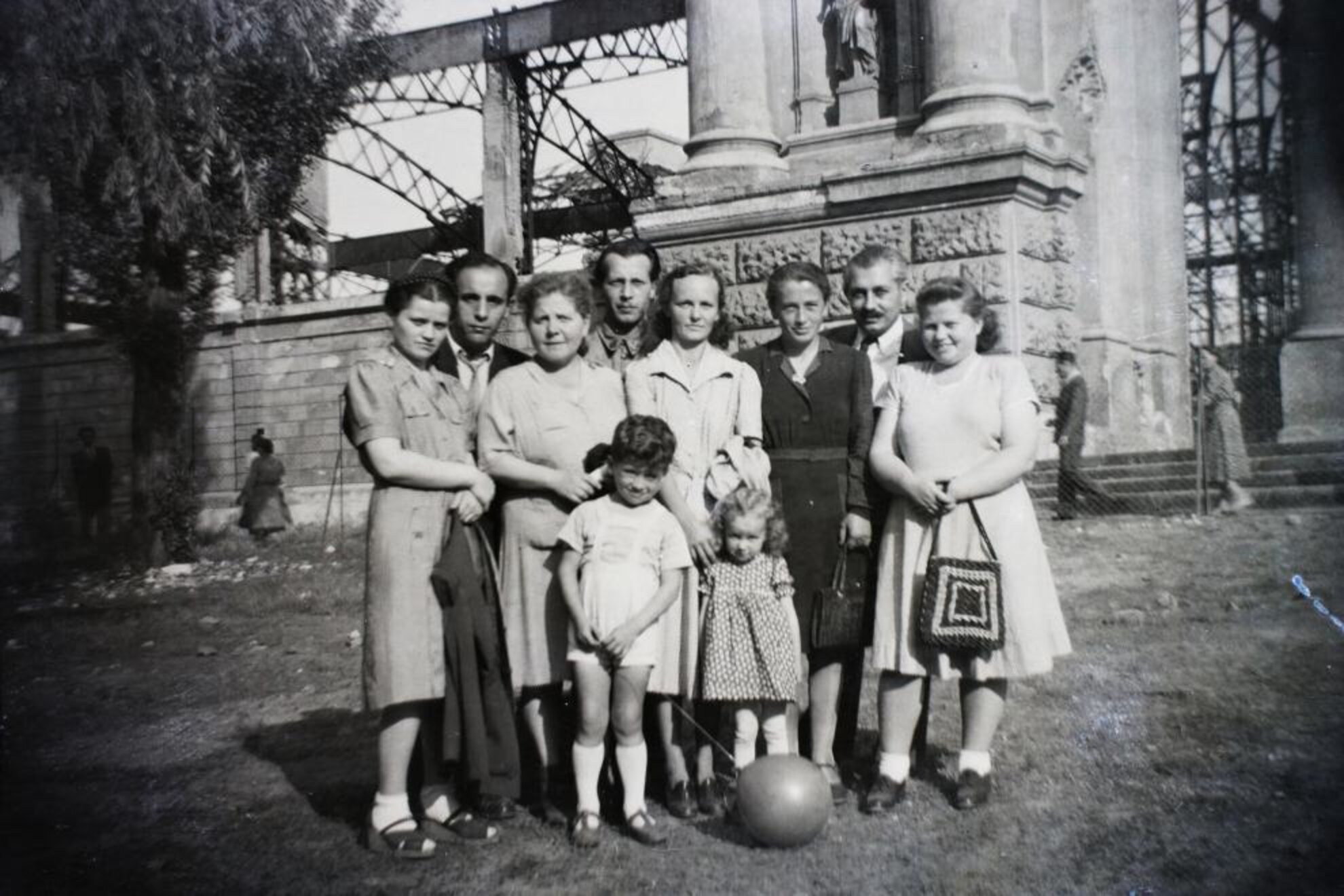
After the war, many major City Park buildings remained bombed out for a long time; the ensuing years of communism under Soviet occupation weren’t exactly kind to Városliget either, as the Red-tinted renovations inserted a lot of gray concrete into the formerly green spaces. However, things got better as the end of the Soviet era drew closer, and a huge landscaping project in the 1970s brought back more foliage in the park – although several ugly construction projects that were installed by the communist regime still mar the park’s appearance to this day.Present-day City ParkNowadays City Park is as popular as ever with joggers, bikers, children, and dog-walkers. Life buzzes near the lake, surrounded by such sights as Vajdahunyad Castle, the Budapest Zoo, and excellent restaurants like the legendary Gundel, Robinson (established immediately after the regime change in 1989, and situated on its own island), or Városliget Café & Bar, located right next to the City Park Ice Rink and providing panoramic park views for diners.If we venture further away from the popular spots of Heroes’ Square, there are parts of City Park that feel sort of haunted, including communist-era constructions like the long-unused Hungexpo buildings, and the mostly abandoned PeCsa music hall, which fills up with people mostly just on weekends when they host a flea market there. The stunning Olof Palme house stands empty now, and although this architectural marvel is a unique place, it certainly has seen better days. With two temporarily shut down museums on the two sides of the park – Hungarian Museum of Science, Technology and Transport and the Museum of Fine Arts – these empty buildings provide something of a frame for the neglected but beloved green space, clearly showing that time has left lasting marks on it.City Park in the future After a long period of neglect, City Park is again at the center of attention, with a major new renovation project on the horizon that could only be matched in scope by the construction projects for the 1896 Millennium Celebrations. The project, titled Liget Budapest, was first developed a few years ago, and it immediately sparked a heated debate, as the original plans included the construction of several new buildings all around the parkland. Since then, many changes were made to the plans, and the Liget Budapest project – set to be finished sometime between 2018 and 2019 – is slowly moving forward. What are the goals of this far-reaching endeavor? The planners are aiming for nothing less than the overall renewal of City Park, constructing several avant-garde buildings to turn the area into a cultural quarter on top of being a popular, multifaceted public space.Liget Budapest plansProbably the most noticeable parts of the project are the new museums planned to be scattered around City Park. We have seen the plans for one of these new institutions at the end of last year:
the avant-garde design of the future House of Hungarian Music by Japanese architect Sou Fujimoto already inspired high fashion with its creatively curvaceous appearance. Fujimoto’s building creates harmony between nature and the built environment by having glass walls that provide visual unity between the park and the building, and a perforated roof that allows sunbeams through. Although it is categorized as a museum, this new establishment wouldn’t serve as a typical exhibition space; the three stories of the building will all have their own function, including an area for interactive experiences on the first floor, a community place and concert venue on the second floor, and a floor for education and experiments on top of the building.
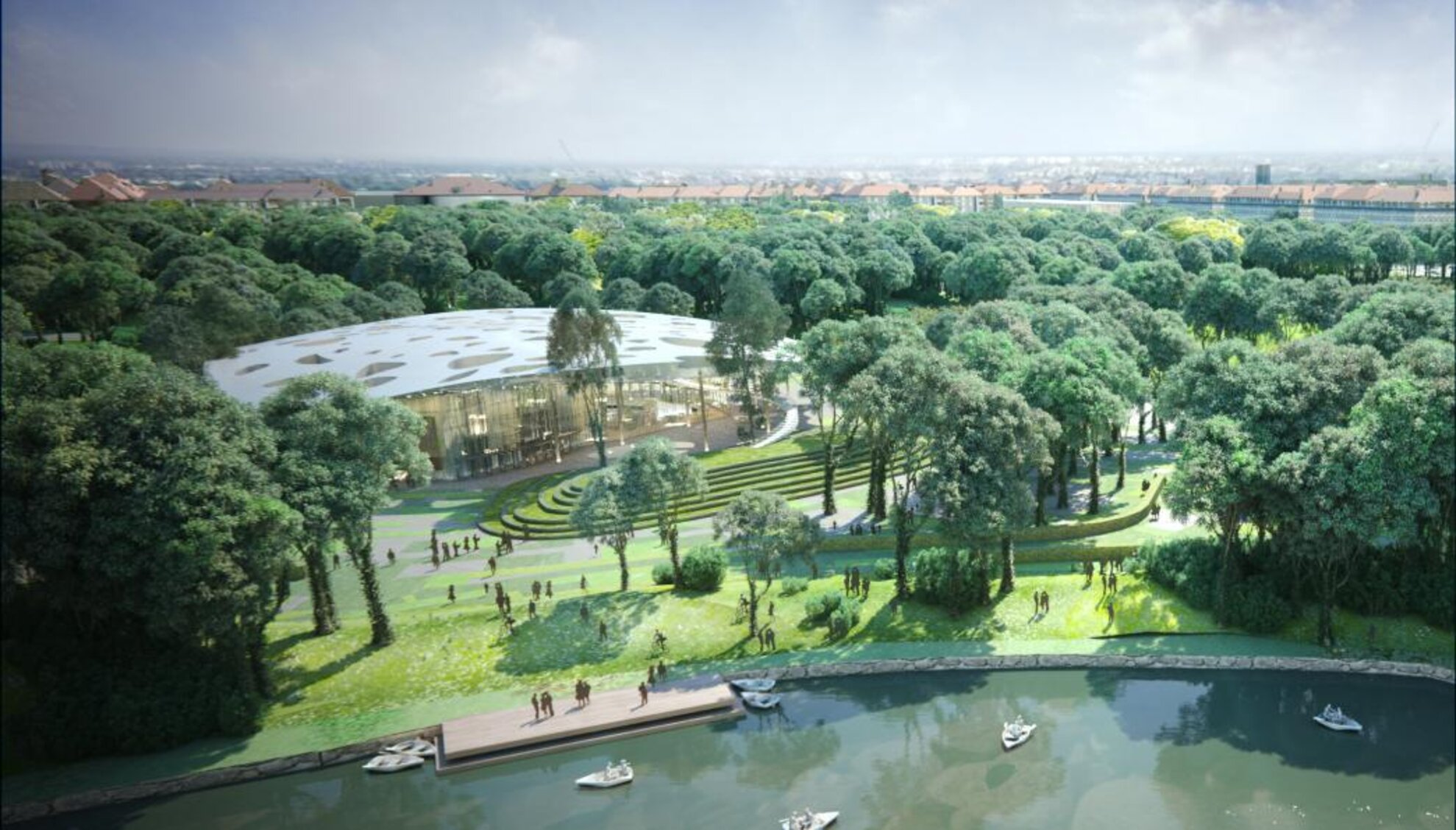
The winning design for the new National Gallery reveals another ultra-modern building that should be integrated into the green fabric of City Park. The visual plans for the bright-white pavilion-like composition bear a distinct hint of Oriental architecture, which is no surprise as they were created by the Japanese SANAA architectural firm. This new gallery would provide a home for a collection of Hungarian artworks that date between the 19th century and the middle of the 20th century. The museum will also serve as a research center, so it would be important for professionals and scholars as well.
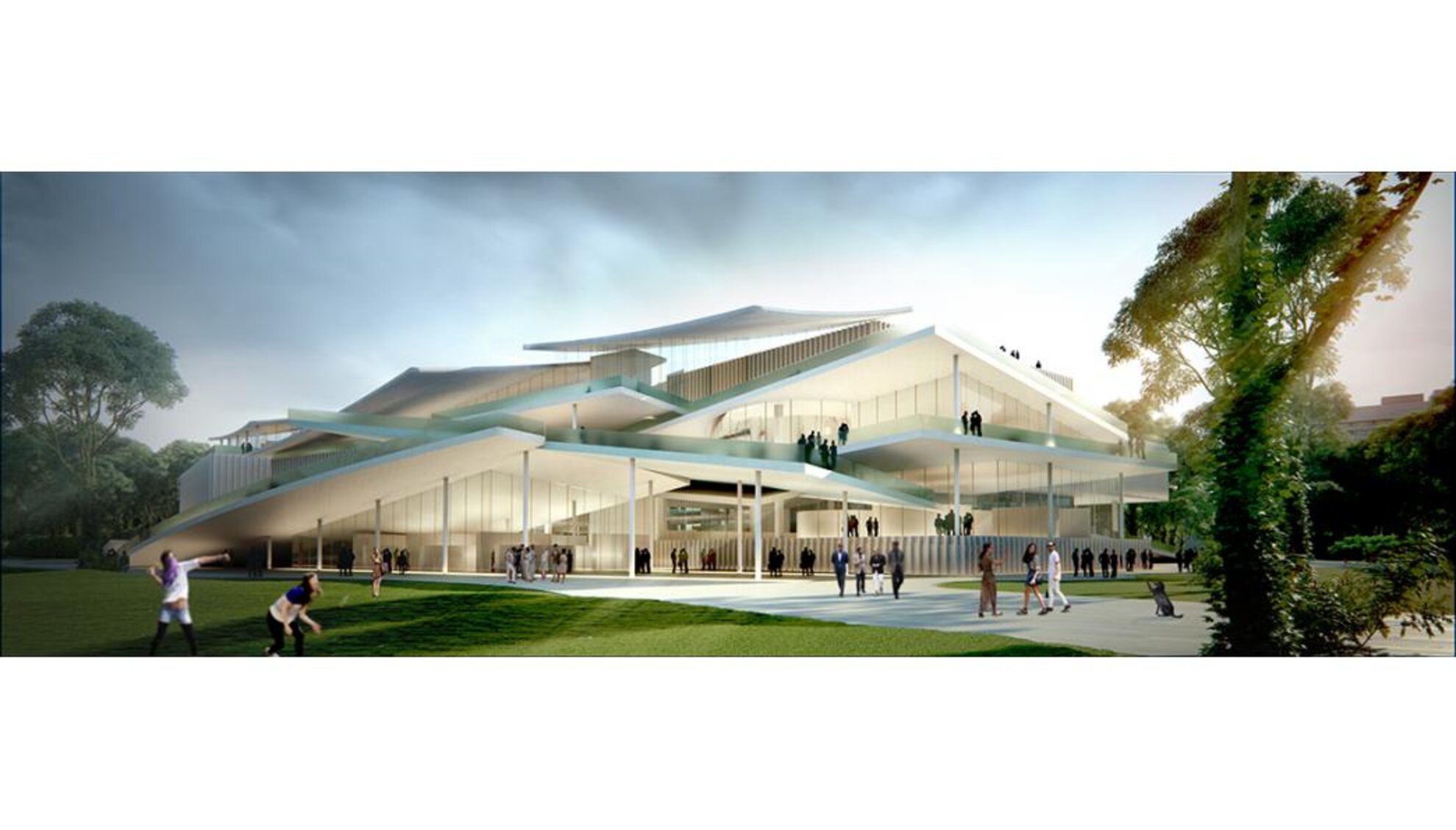
Another big change will be at the 1956 Memorial Square, where the future Museum of Ethnography is set to be built. This means that the collection that will be on display would be going home, as it was first presented there in City Park during the 1896 Millennium Exhibition. According to plans, this building would also function as a receptionbuilding. The winning design for the museum was recently announced – the visual plans show a modern, curvedbuilding with stairs and green areas on the surface of the two sides of the building, where it “bends”. The design also has a pinch of Hungary to it, with traditional folk motifs decorating the sides of the building.
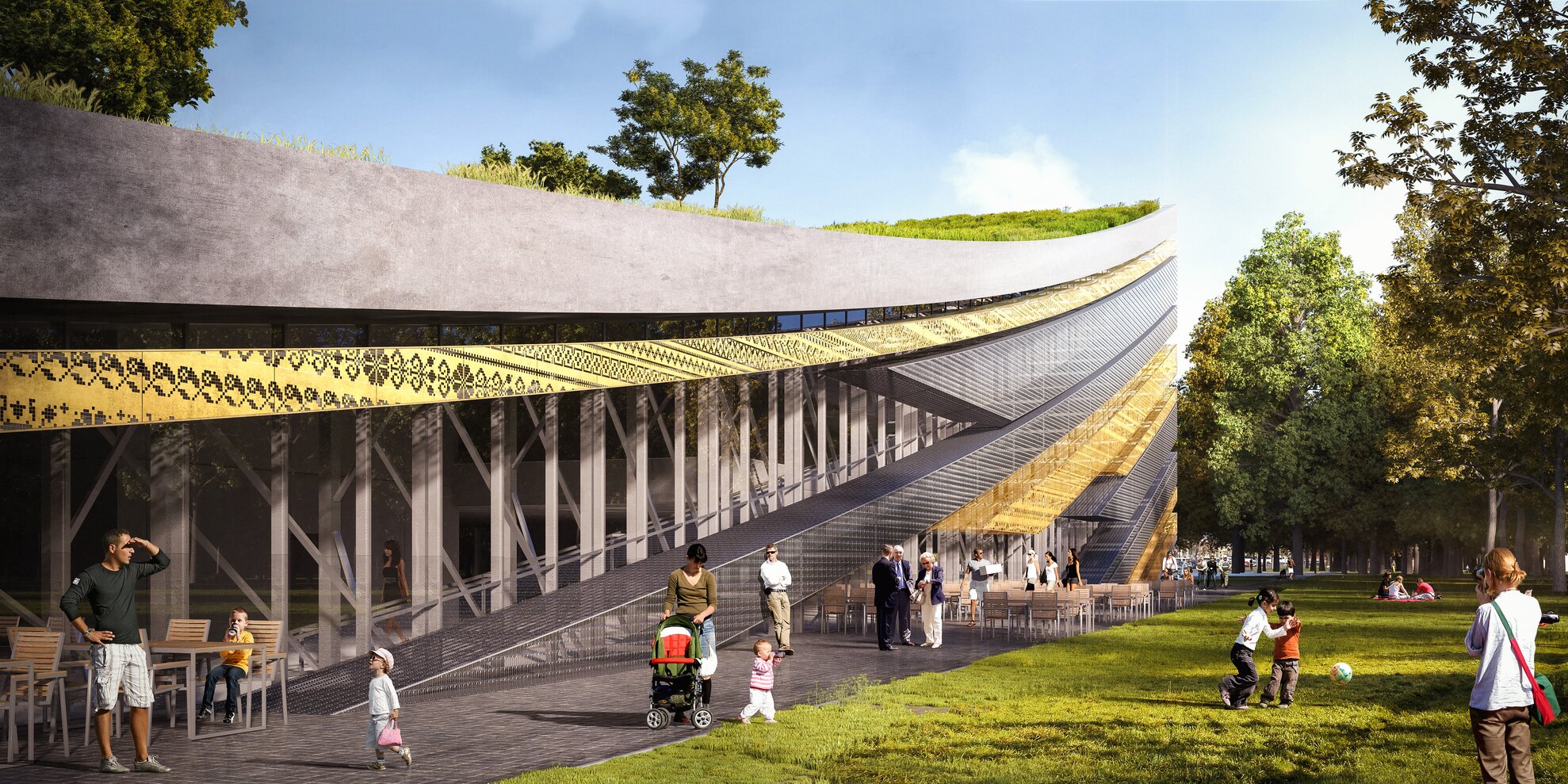
Within the frameworks of the project, the Museum of Fine Arts – currently closed for renovations – will be expanded with the National Museum Restoration and Storage Center. This new wing will be built on the site of the former Szabolcs Street Hospital; the visual designs by the Narmer Architectural Studio show that this new installment will harmonize with the style of the area’s 19th-century buildings. Although its main task will be to assist other museums of Budapest, this building will not only be interesting for the professional crowds, but it will also draw visitors as a visitor center.
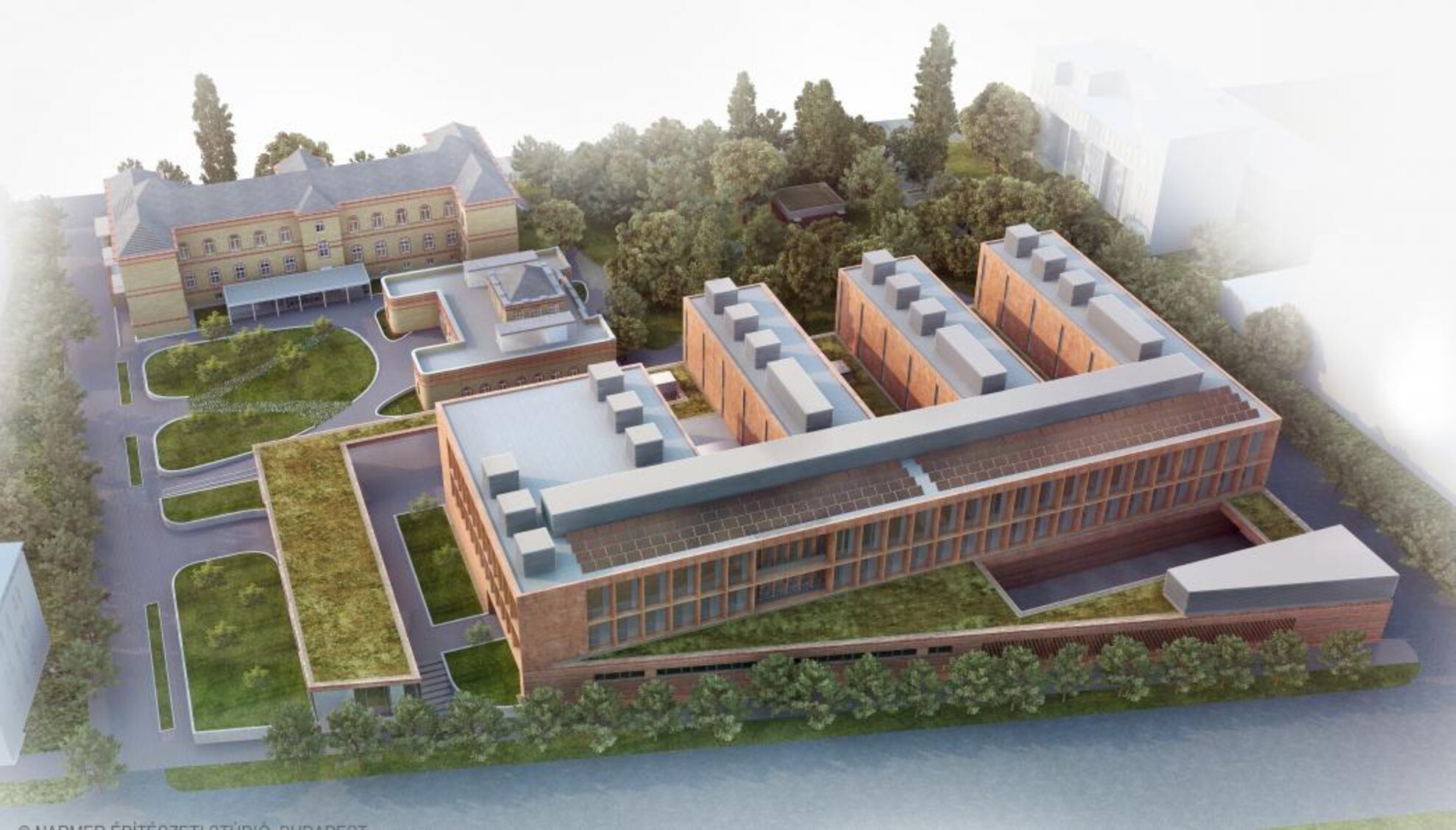
New-old innovationsBesides planning entirely new buildings, according to Liget Budapest plans, some old edifices will be renovated or brought back to life. One of them, the Hungarian Museum of Science, Technology and Transport at the “entrance” of City Park, closed for renovations last year, and it will be restored based on the original architectural designs, so it will once again appear in its pre-WWII glory with a dome and a romantic-eclectic design. Besides the external revival, the museum will be enlarged with subterranean rooms, so once everything is finished, we can admire classic vehicles like the Ford Model T in a truly spacious exhibition area.
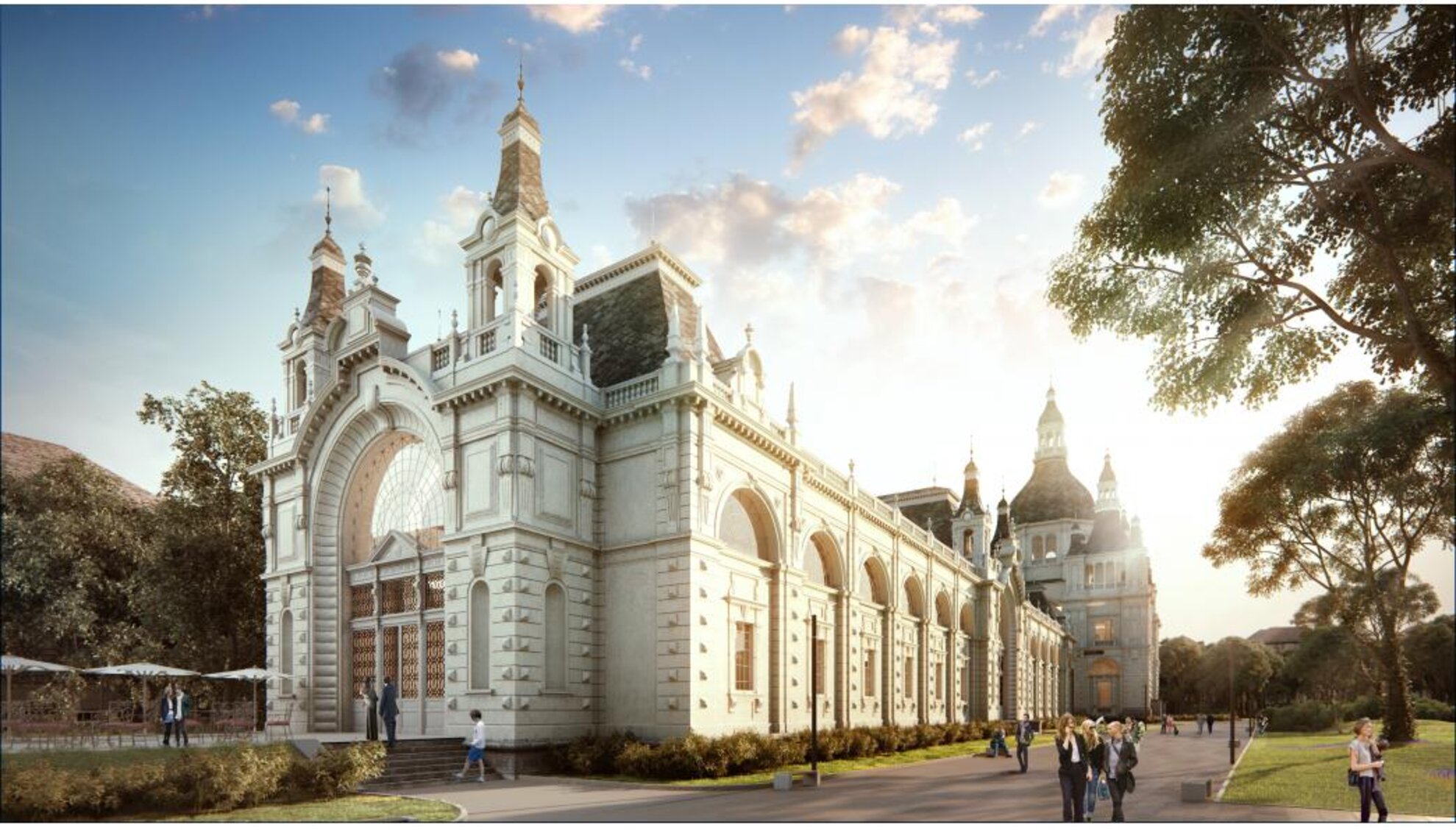
Another new-old building is the theater that is planned to be built at the southern part of 1956 Memorial Square; City Park provided a home to such an institution up until the middle of the last century, so this would be sort of a revival of an old tradition, especially since the theater would be constructed according to the original architectural plans. So far it looks like the Art Nouveau building will become a center for youths, as it will mainly provide entertainment for children.
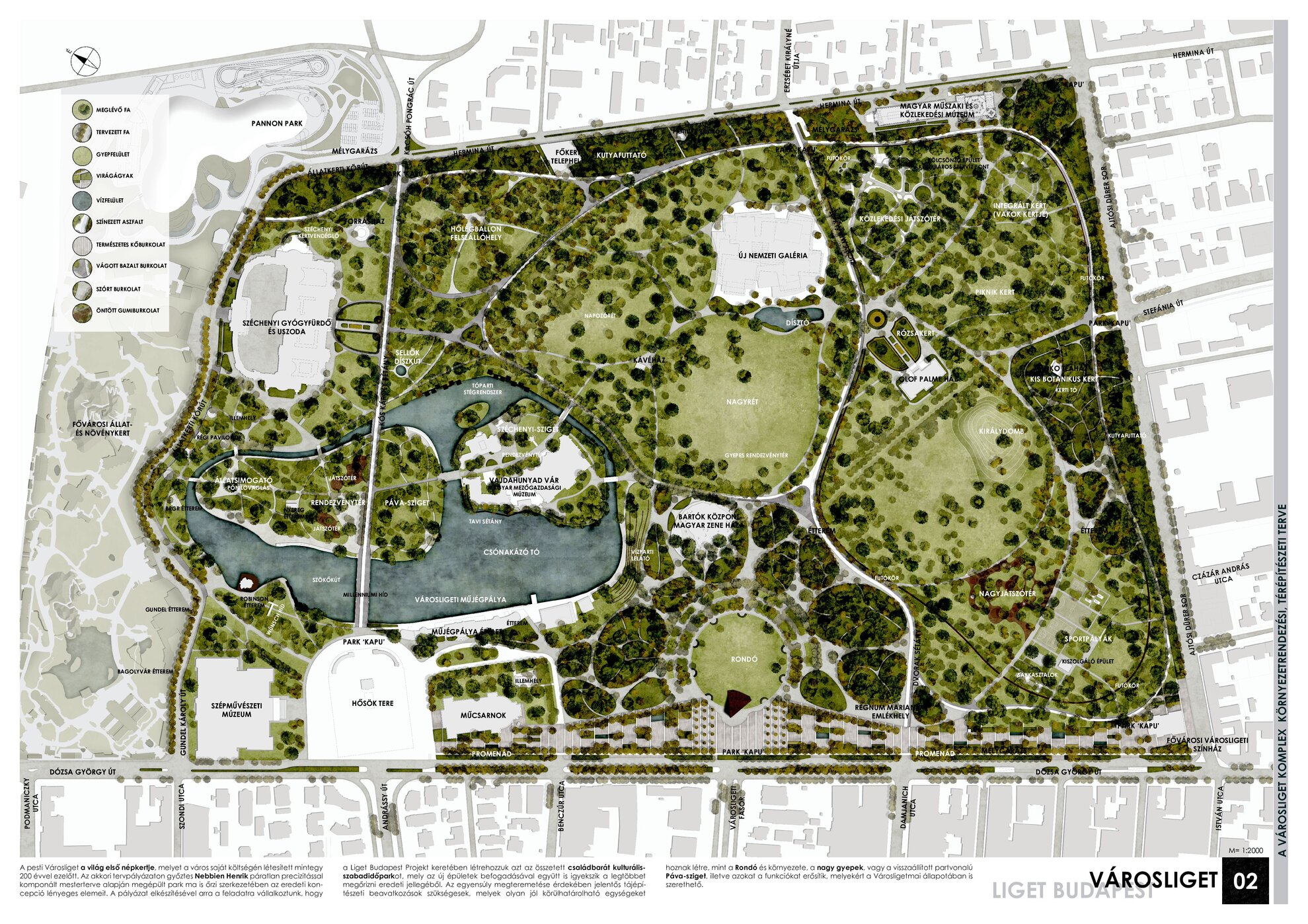
As a park, one of the main reasons that people love Városliget is that it adds a green paradise to the city – so, since the Liget Budapest project aims to renew the whole area, it also includes plans for landscaping. The competition for the landscaping designs closed recently, and the winning plans show larger green areas, a rosegarden planted behind the Olof Palme House, running tracks, and narrower roads for traffic to give more space for bikers and walkers, just to mention a few proposed changes.Out with the oldThe plans for Liget Budapest already have had some palpable impacts on park life: since 1985, PeCsa was a popular venue for concerts, conventions, and all sorts of other major events, but last autumn the indoor-outdoor facility was forced to close, as its dilapidated building is scheduled to be demolished to make way for the new National Gallery. However, the aforementioned PeCsa Flea Market, the hunting ground for all kinds of antiques, rarities, collectibles, and surprising finds, is still operating by the old PeCsa building as of press time, and is slated to continue operations at another nearby location when they are no longer able to function at this space.
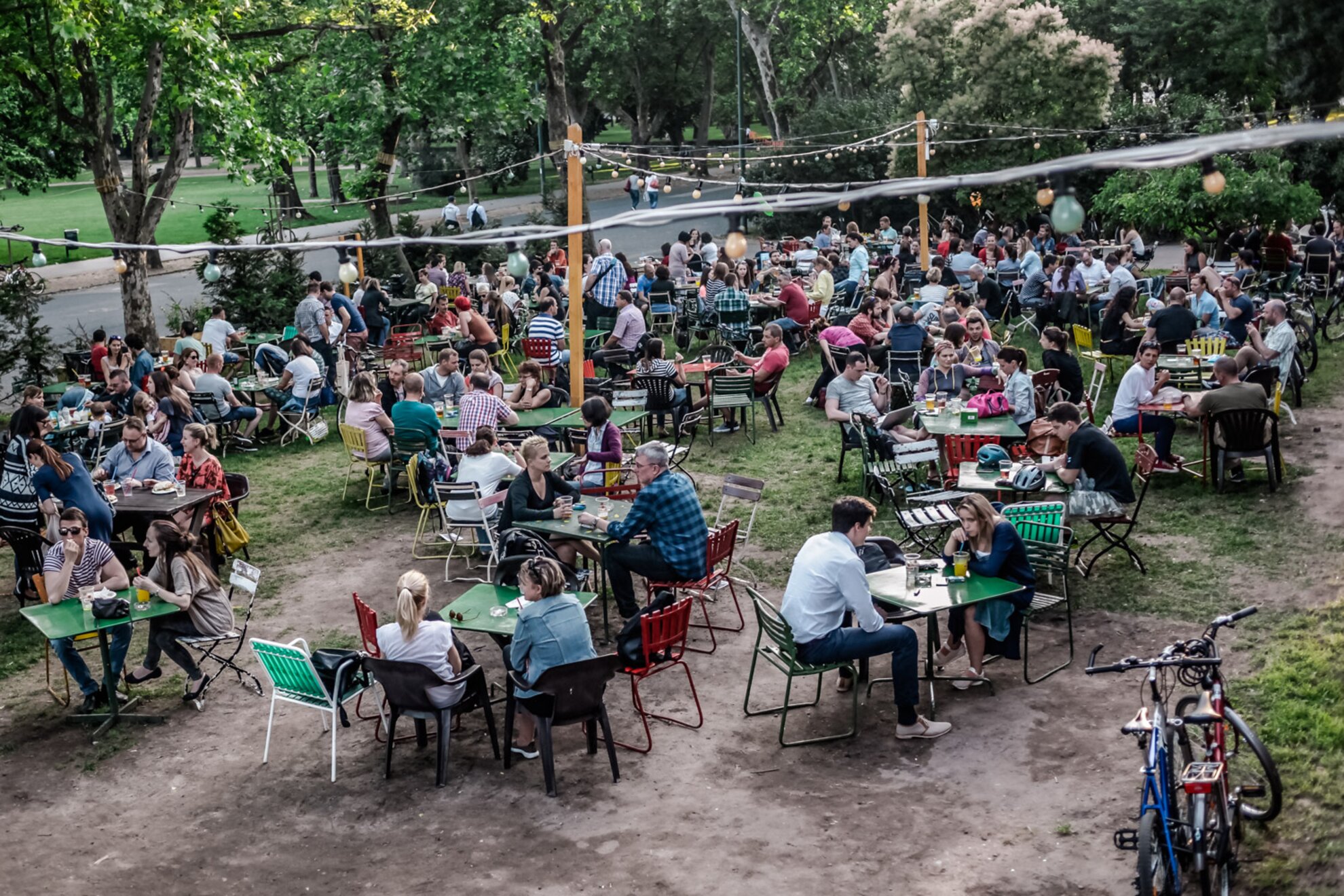
Additionally, Kertem – an open-air summertime hangout that provided a home base for countless outdoor shenanigans – was not allowed to reopen at the same location near the Ice Rink pond this summer, as that walled open space is scheduled to be demolished to clear space for the Hungarian House of Music. Luckily, the management of Kertem was able to negotiate with the authorities of City Park to reopen near Olof Palme House for at least the 2016 summer season.Protests against Liget BudapestAlthough the Liget Budapest constructions haven’t started yet, some elements of City Park were already removed to make room for the new plans – including many trees around the old Hungexpo buildings that are about to be demolished. This stirred a great deal of unrest among a lot of environmentalists and other locals, which led to the formation of a Liget Budapest protest group called “Ligetvédők” (translating as “Park Protectors”), demanding the renewal of the parkland without adding the new buildings, while maintaining all of the park’s functions. The group organizes regular demonstrations in the park, including a recent one with Greenpeace. According to the group, although the Liget project promises to enlarge the green areas, this is a meaningless promise because this foliage wouldn’t be provided by air-cleaning trees, but by grassland and other plants that are near the ground. Trees would also be harmed by the construction, as a lot of them would have to be cut down, and even if they plant new ones, it takes a lot of time to fully restore the conditions to again provide the level of environmental benefits that the park currently provides. The Ligetvédok protestors also say that the constructions would ruin the park for years to come, and until they are done, the park will not be a place to relax, and certainly not a place to bond with nature.
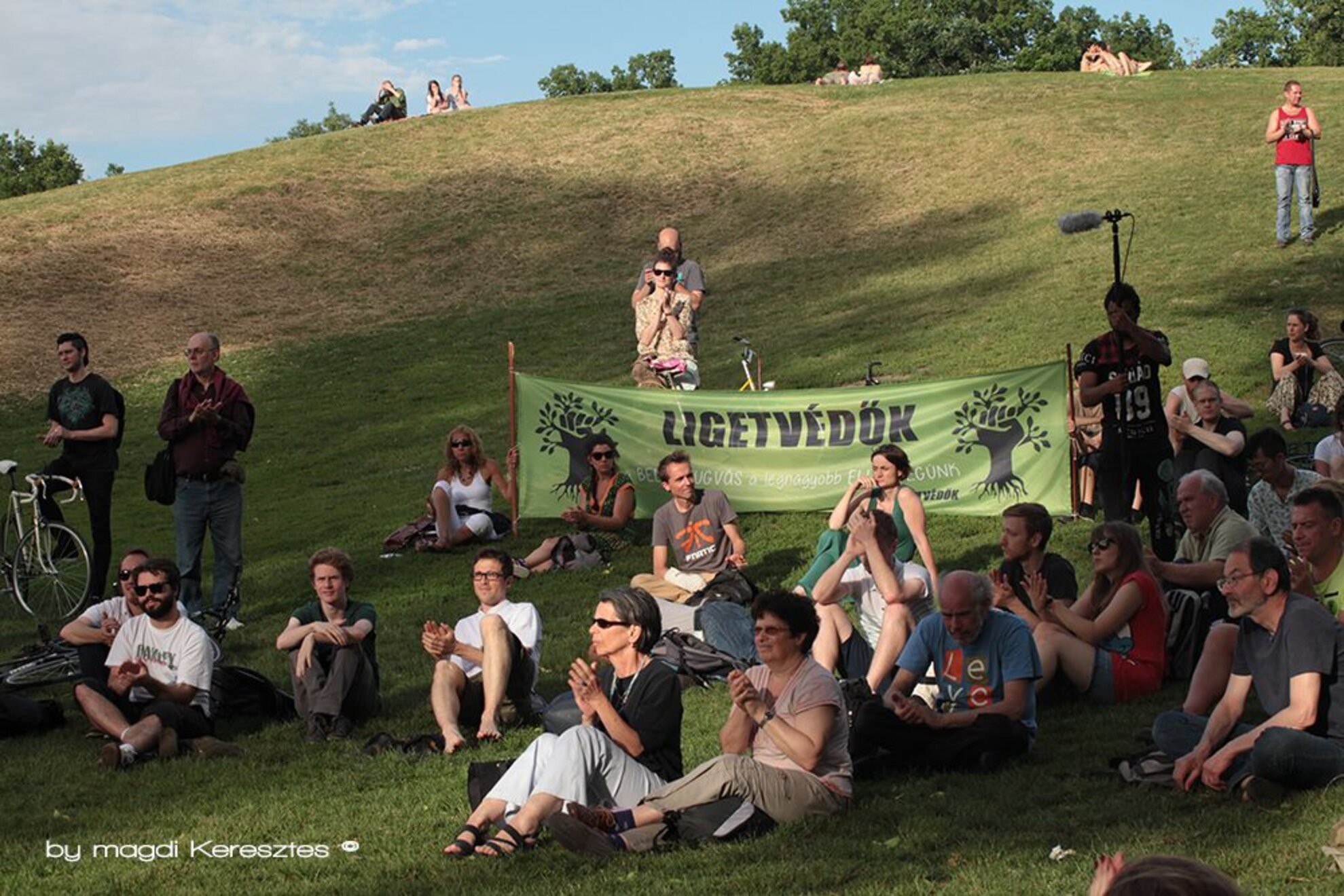
It remains to be seen if the protest movement will have any impact on the Liget Budapest plans, so City Park still has some uncertain years ahead, but this is not the first time – 120 years ago, when the Millennium Exhibition took place in the park, there were certainly a lot of changes occurring here during a very short period of time. All things considered, including that summer is still in its early stages with plenty of long days and high temperatures to come, it is probably a good idea to go to City Park to enjoy all the great attractions it has to offer right now.
